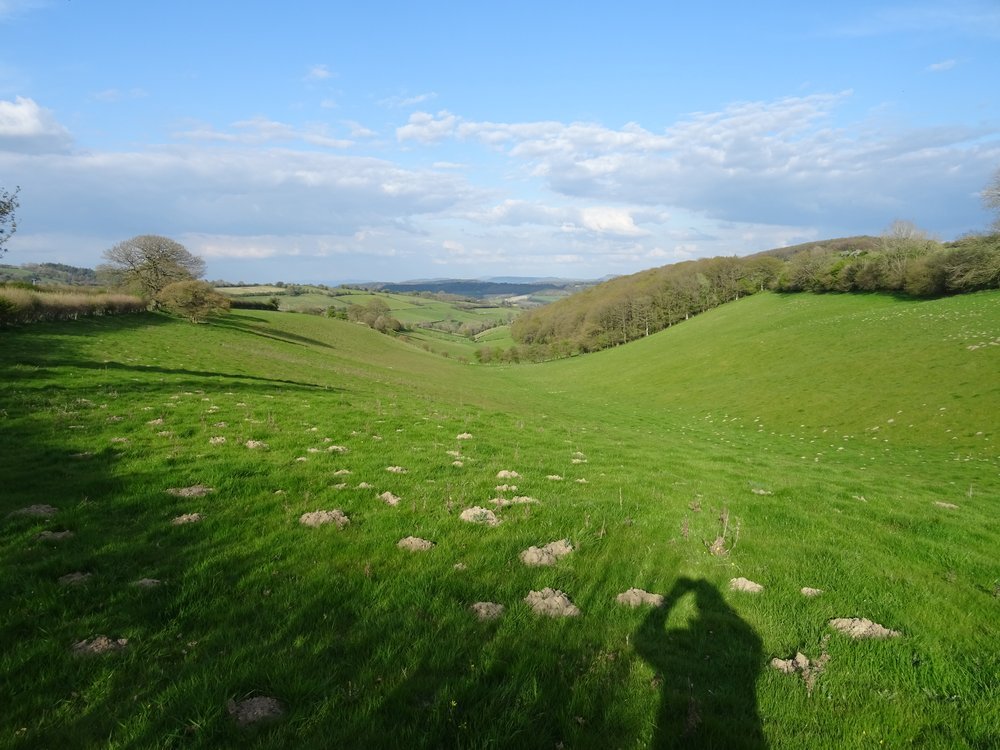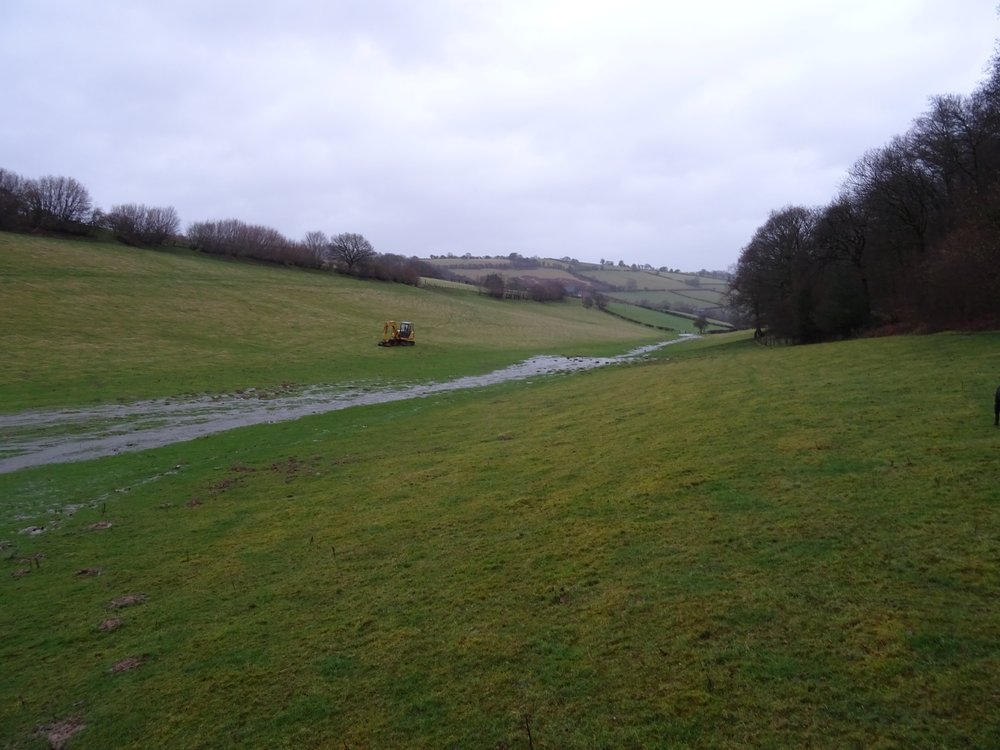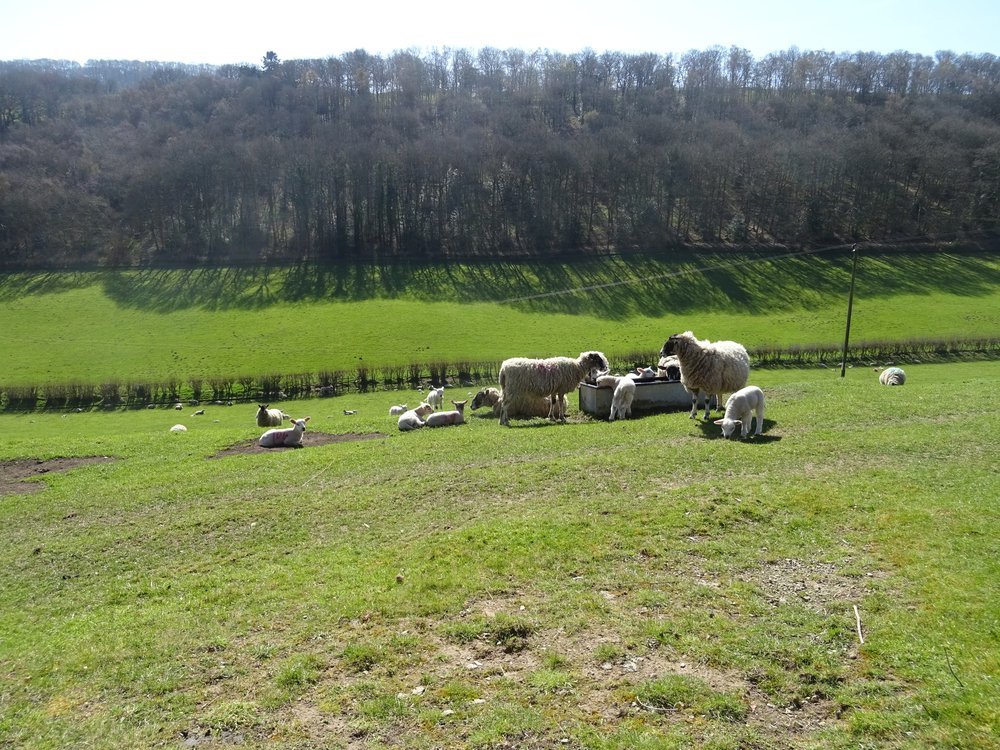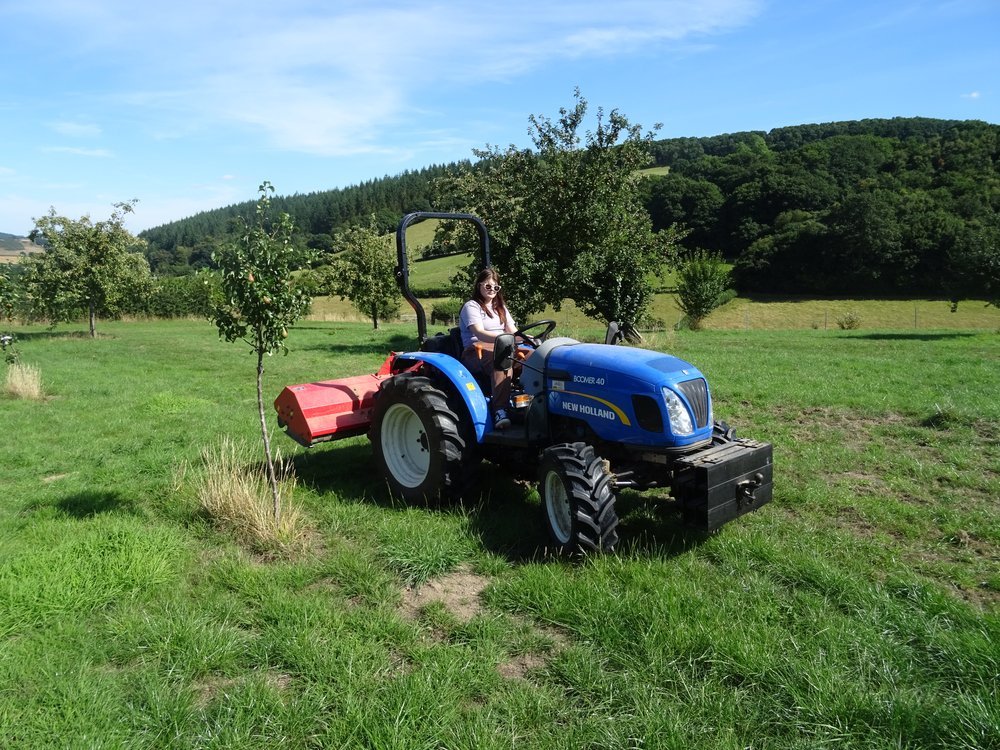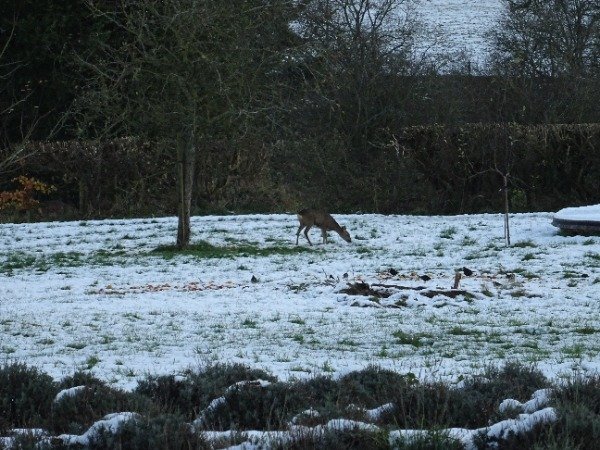FARM
Willey Lane Farm is a post medieval farmstead, currently covering about 92 acres of undulating ground, in the hills of north Herefordshire area of the Welsh marches. All but 1 acre is in a single ring fenced block, and comprises about 65 acres of permanent grass, usually grazed by sheep, and a single block of 23 acres of ancient semi-natural woodland. The remainder is the house and garden and the orchard to the east of the house. Ancient semi-natural woodland is woodland which has been in existence since at least 1600 AD. The orchard shows as an orchard on the earliest ordnance survey maps but nearly all the old trees were cut down by previous owners, leaving only a perry pear tree, so the orchard has been replanted with a mixture of fruit and ornamental fruit trees, and has also been planted with 1500 Grosso Angustifolia lavender plants which not only look pretty and smell nice but also attract bees and butterflies. The pastureland is partly in a dry valley with fairly steep sides and partly on more gently sloping fields adjacent to the road, these latter fields have lynchets formed by long periods of contour ploughing causing the soil to move down the hill. The valley bottom contains a stone lined medieval well more than 30 feet deep, which pre-dates the old farmhouse and so was probably sunk prior to 1700 AD, and a late 19th century pond to capture spring water.
Looking west up the dry valley showing the pastureland and part of the ancient semi natural woodland, Willey Lane Wood.
Slightly to the left of centre is a clump of trees in the field which mark the position of pond made in the 19th Century to capture the output of a spring.
Just to the right of the pond mound is a medieval stone lined well.
Looking east from the top of the dry valley. There is a height gain of about 333 feet (100 metres) from the lowest part of the farm to the highest.
The land to the left is relatively level compared to the dry valley and has been cultivated over the centuries. but is now permanent pasture. Plenty of molehills are evident in the foreground.
Camping field with yurts
Willey Lane Farm covers about 92 acres (35.8 hectares) of which all but 1 acre is in a single ring fenced block. Included in this acreage is a single block of woodland of about 23 acres (9.12 hectares). The rest is nearly all permanent pasture, with a small area being an orchard in which Lavender is grown and is used as a camping field. The fields are mainly divided by mature hedges which act as corridors for small mammals to move around the farm as well as providing food for the sheep.
The soil is free draining, but heavy prolonged rain can produce an ephemeral stream in the valley bottom. This usually only occurs during the winter months
Historically, Willey Lane Farm is described as a post-medieval farmstead.
The picture shows a lynchet across the middle of the image. A lynchet is formed when a slope is ploughed along the contours for a long period of time, resulting in the soil sliding down the hill to form a ridge to form a positive lynchet.
A similar ridge at the top of the slope is a negative lynchet where the soil has moved down the hill. Both positive and negative lynchets can be seen on the farm.
The original farmhouse, pictured here in the early part of the 20th century, was constructed about 1700 with additions about 1800 and the early 21st century and is now a private dwelling house.
The present farmhouse, shown on the home page, is a conversion of a traditional Herefordshire barn originating from about 1800.
The 19th century pond overflowing after heavy prolonged rain. The triangular structure just beyond the pond is the stone lined well which predates the house and is therefore earlier than 1700'.
Thus, there is evidence of a long history of farming Willey Lane
Winter
Spring
Spring
Spring
Summer
Lambs - March 2023
April 2024
August 2024
November 2024
Roe deer gorging on windfall apples - November 2024
Autumn
Celandine - March 2023
May 2024
Harvesting the Lavender - August 2024
November 2024

